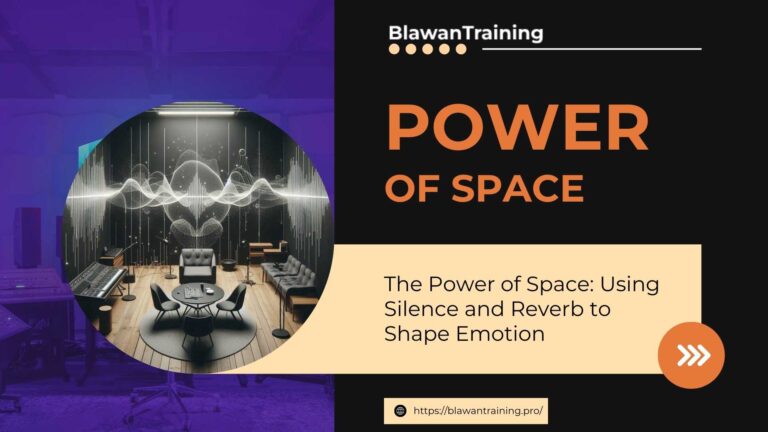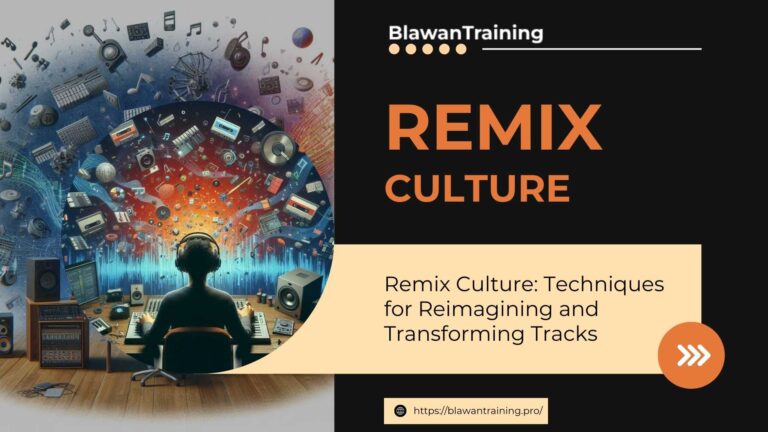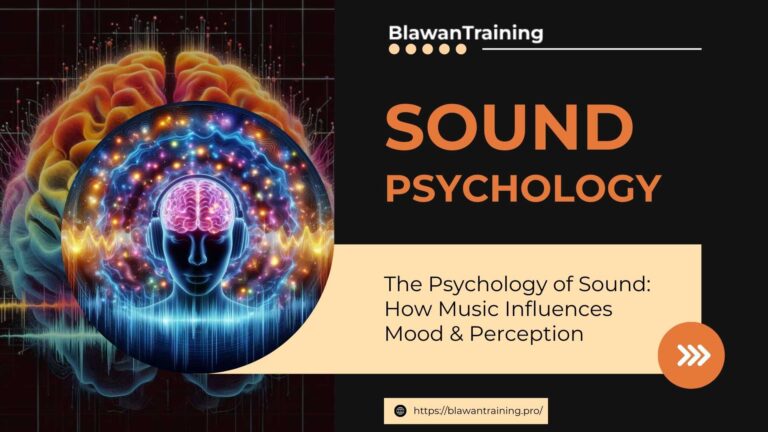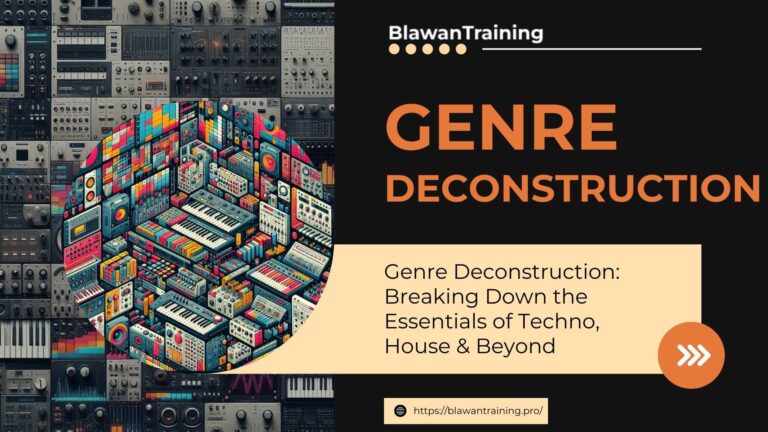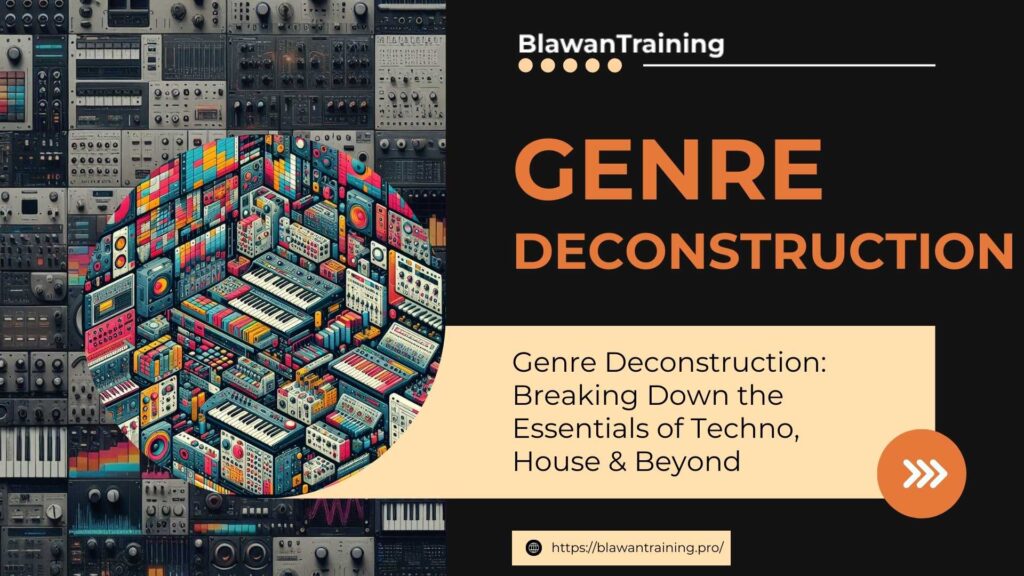
Genre Deconstruction
Introduction to Genre Deconstruction
In the ever-evolving landscape of electronic music, Genre Deconstruction has become an invaluable tool for producers and DJs alike. By dissecting the defining characteristics of styles like Techno, House, and their many offshoots, you gain insight into rhythm patterns, sound design techniques, and arrangement strategies. This blog will guide you through a comprehensive Genre Deconstruction, breaking down the essentials of Techno, House, and beyond to help you elevate your own productions.
What Is Genre Deconstruction?
Genre Deconstruction involves analyzing a musical style’s core components—tempo, instrumentation, arrangement, and production techniques—to understand what makes it unique. Rather than simply mimicking a genre, deconstruction encourages you to extract useful elements and recombine them, fostering creativity and innovation in your own tracks.
Why Genre Deconstruction is required?
- Deep Listening Skills: Training your ear to recognize subtle differences between genres.
- Creative Freedom: Mixing and matching elements to craft fresh, hybrid sounds.
- Technical Mastery: Understanding the ‘why’ behind production choices, from drum programming to synthesizer patches.
The Core Elements of Techno
Techno’s relentless energy and precision are driven by a specific set of principles. Here’s how Genre Deconstruction applies to one of electronic music’s most influential styles.
Rhythm and Groove
At the heart of Techno lies a tight, mechanical groove. Producers often rely on:
- Four-on-the-Floor Kick: A steady pulse, typically around 125–135 BPM.
- Syncopated Percussion: Hi-hats, claps, and tom hits layered to create movement.
Sound Design and Synthesis
Techno’s futuristic timbres come from advanced synthesis:
- Analog and Virtual Analog Synths: For warm basslines and acidic leads.
- FM and Granular Synthesis: Crafting metallic textures and evolving pads.
Atmosphere and Aesthetics
The mood in Techno tracks is as important as the rhythm:
- Reverb and Delay: Creating spacious, hypnotic environments.
- Subtle Automation: Modulating filter cutoff and effects for dynamic progression.
Deconstructing House Music Essentials
House music’s soulful grooves and party-ready vibes make it a perennial favorite. Through Genre Deconstruction, you’ll identify the building blocks that give House its signature feel.
Four-on-the-Floor Beats
Similar to Techno, House uses a steady kick, but usually at a slightly slower tempo (118–128 BPM), giving it a more relaxed, danceable swing.
Vocal Chops and Sampling
- Chopped Vocals: Short, rhythmic snippets that add human warmth.
- Classic Samples: Disco loops, piano riffs, and bass stabs lifted and repurposed.
Warmth and Soulful Elements
- Analog Warmth: Saturation and tape emulation on drums and synths.
- Chord Progressions: Jazzy or gospel-inspired harmonies that evoke emotion.
Exploring Genre Deconstruction Beyond Techno and House
Once you’ve mastered the basics, Genre Deconstruction opens doors to myriad subgenres and hybrids that push sonic boundaries.
Minimal and Microhouse
- Sparse Arrangements: Focus on tiny rhythmic details and subtle textures.
- Experimental Sound Objects: Unconventional samples and field recordings.
Tech House and Breakbeat Fusion
- Mid Tempo Swing: Combining House’s groove with Techno’s drive.
- Breakbeat Patterns: Syncopated drum loops layered over four-on-the-floor fundamentals.
Emerging Subgenres
- Melodic Techno: Ethereal melodies and lush pads fused with driving beats.
- Afro House: African percussion and rhythms blended with House structures.
Techniques for Effective Genre Deconstruction
Having identified genre hallmarks, here are strategies to systematically break down tracks.
Critical Listening Strategies
- Frequency Analysis: Use spectrum analyzers to see how energy is distributed across low, mid, and high frequencies.
- Reference Tracks: Compare your mix to benchmark tracks in the genre to spot discrepancies.
Analyzing Arrangement and Structure
- Timeline Mapping: Chart intros, breakdowns, drops, and outros to understand pacing.
- Layer Dissection: Solo individual tracks—drums, bass, leads—to hear how each contributes to the whole.
Sound Design Breakdown
- Preset Deconstruction: Reverse-engineer synth patches by matching oscillator, filter, and envelope settings.
- Effect Chain Replication: Identify key plugins and order (e.g., distortion → EQ → reverb) that shape the genre’s sound.
Applying Genre Deconstruction in Music Production
Armed with analytical insights, you can creatively implement your findings.
Creating Hybrid Genres
- Cross-Pollination: Blend Techno’s driving bass with House’s vocal chops for a fresh hybrid.
- Unexpected Pairings: Merge microhouse minimalism with breakbeat energy.
Building Your Signature Sound
- Selective Borrowing: Integrate only the elements that resonate with your artistic vision.
- Personalization: Experiment with varying tempos, instrumentation, and cultural influences.
Conclusion: Genre Deconstruction
Genre Deconstruction is more than an academic exercise—it’s a practical roadmap to deepen your understanding of Techno, House, and the myriad styles beyond. By dissecting rhythms, synthesizers, and arrangements, you’ll gain the tools to innovate and refine your own productions.
Visit BlawanTraining—the premier music production education platform. With expert tutors, in-depth courses, and hands-on software training, BlawanTraining empowers you to master your craft and create genre-defying tracks.
Join a vibrant community of creators where you’ll collaborate on projects, share feedback, and spark new ideas. From interactive live sessions to self-paced video tutorials, BlawanTraining supports your growth every step of the way, helping you turn abstract concepts into polished, unforgettable tracks.
Start your journey today!
Explore BlawanTraining’s Courses and unlock your full production potential.
